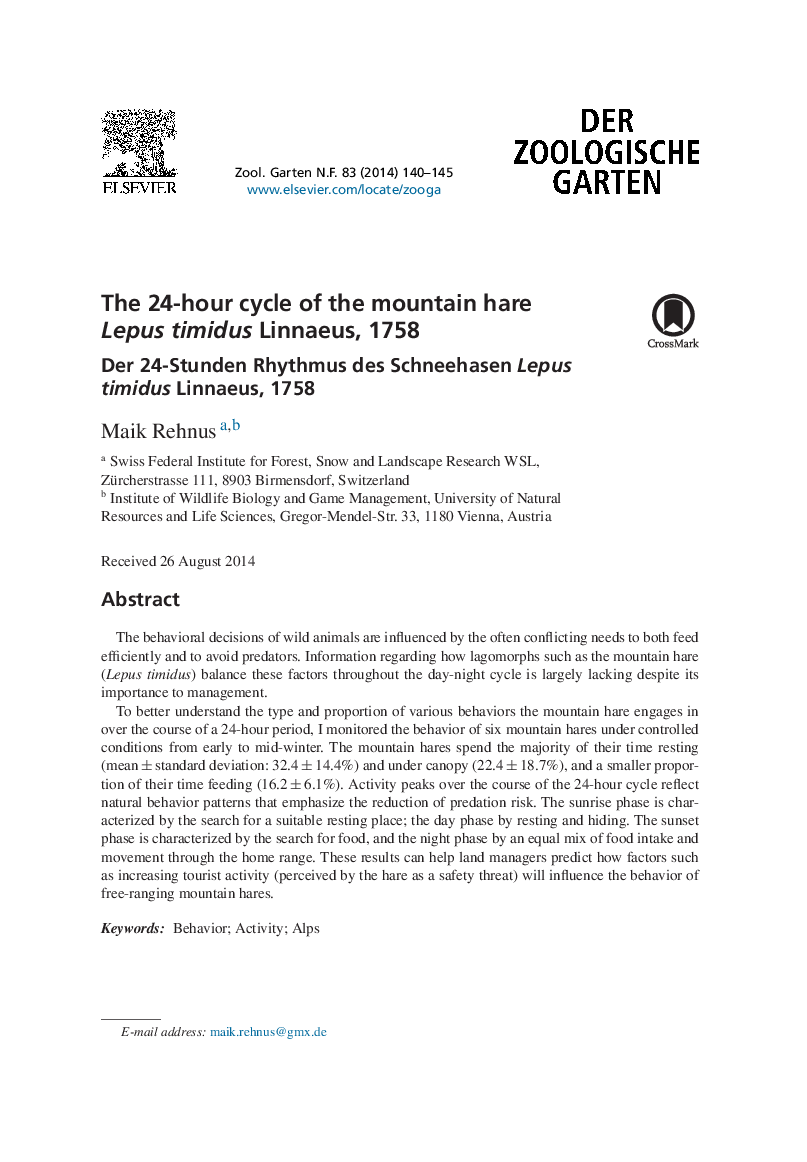| Article ID | Journal | Published Year | Pages | File Type |
|---|---|---|---|---|
| 2472871 | Der Zoologische Garten | 2014 | 6 Pages |
The behavioral decisions of wild animals are influenced by the often conflicting needs to both feed efficiently and to avoid predators. Information regarding how lagomorphs such as the mountain hare (Lepus timidus) balance these factors throughout the day-night cycle is largely lacking despite its importance to management.To better understand the type and proportion of various behaviors the mountain hare engages in over the course of a 24-hour period, I monitored the behavior of six mountain hares under controlled conditions from early to mid-winter. The mountain hares spend the majority of their time resting (mean ± standard deviation: 32.4 ± 14.4%) and under canopy (22.4 ± 18.7%), and a smaller proportion of their time feeding (16.2 ± 6.1%). Activity peaks over the course of the 24-hour cycle reflect natural behavior patterns that emphasize the reduction of predation risk. The sunrise phase is characterized by the search for a suitable resting place; the day phase by resting and hiding. The sunset phase is characterized by the search for food, and the night phase by an equal mix of food intake and movement through the home range. These results can help land managers predict how factors such as increasing tourist activity (perceived by the hare as a safety threat) will influence the behavior of free-ranging mountain hares.
